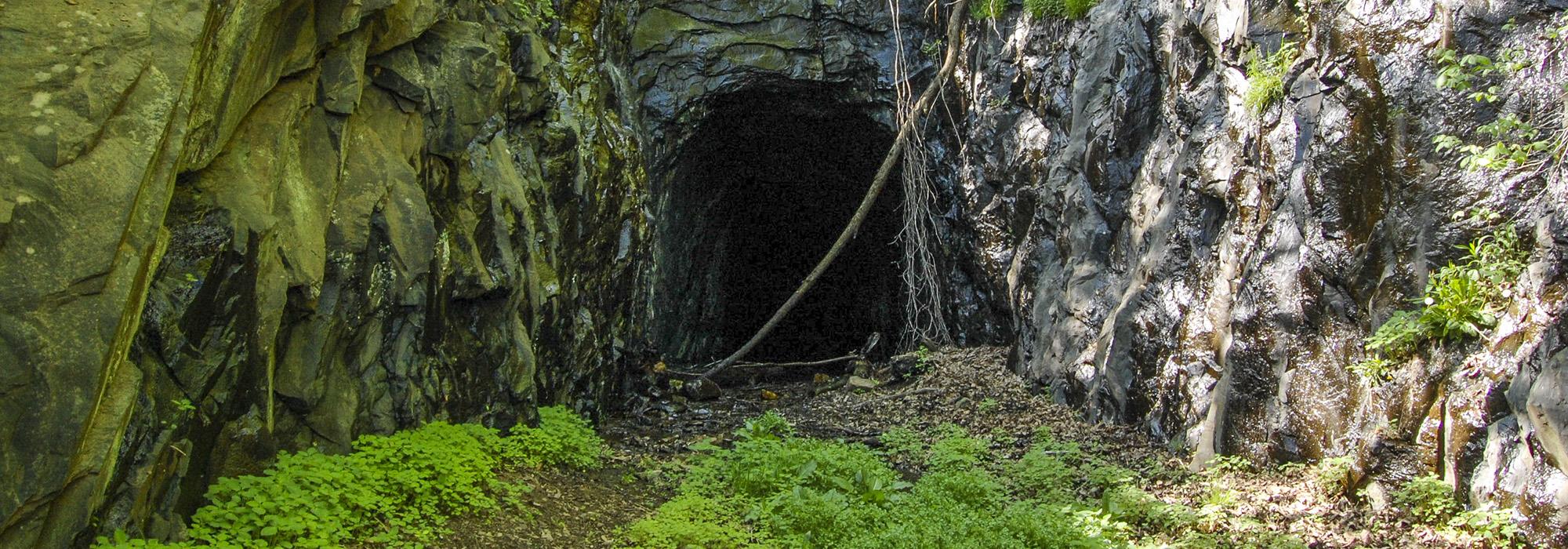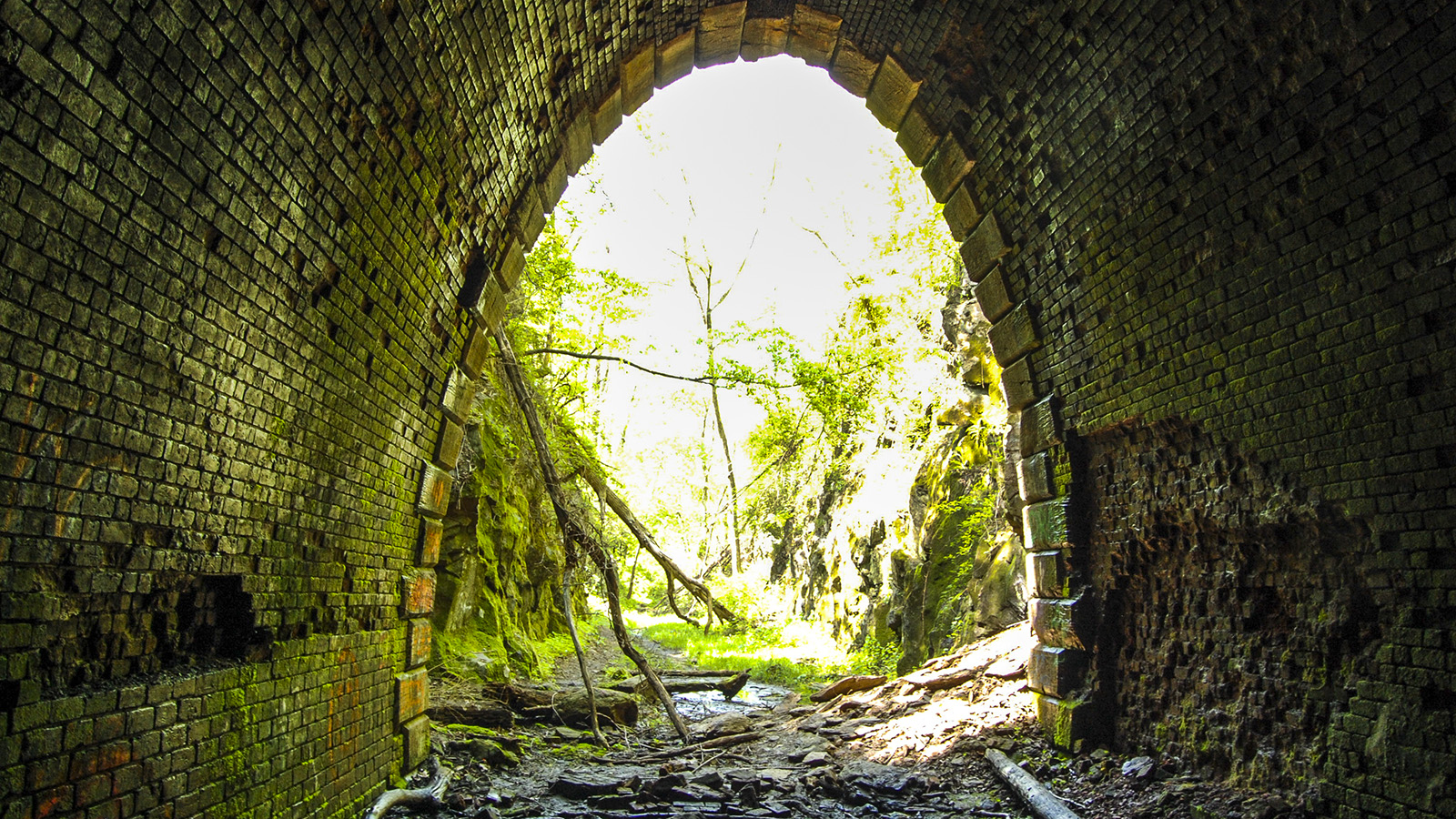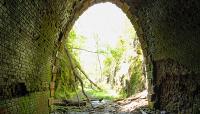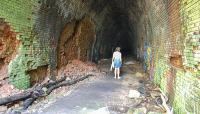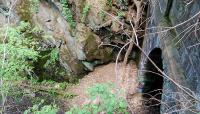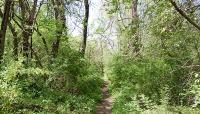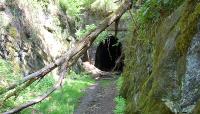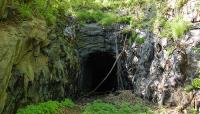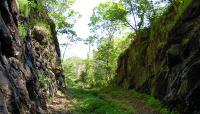The largest of four tunnels constructed to accommodate a Central Virginia Railroad extension west of Charlottesville through the Blue Ridge Mountains, this passage was completed in 1858. Its 4,273 linear feet were cut near Rockfish Gap, an historic gateway to the Shenandoah Valley. French engineer Claudius Crozet was tasked with the project, and utilized a distinctive semi-elliptical profile reaching 21 feet high and 16 feet wide. Some 2,000 laborers, primarily Irish immigrants and enslaved people painstakingly carved through the hard greenstone schist with hand tools. After eight years of construction originating from both sides of the mountain (at Afton to the east and Waynesboro to the west), the two crews met in the middle, mere inches off center. When completed, it was the longest railroad tunnel in North America. While the eastern entrance required little reinforcement with the tunnel carved directly into the rock resulting in a cave-like appearance, the western entrance required structural reinforcement. In service for 90 years, the Chesapeake and Ohio Railway built an adjacent, modern tunnel in 1944 and Crozet’s passage fell into disuse.
Today, the rail bed is still existent, the brick entrance reinforcing remains intact, and two concrete bulkheads, from the 1950s, block through passage. In 2014, work commenced to reopen the tunnel for hikers and will serve as a component of interconnected local, regional and long distance trails. A significant feat of engineering, in 1976 the American Society of Civil Engineers identified the tunnel as a National Historic Civil Engineering Landmark.



